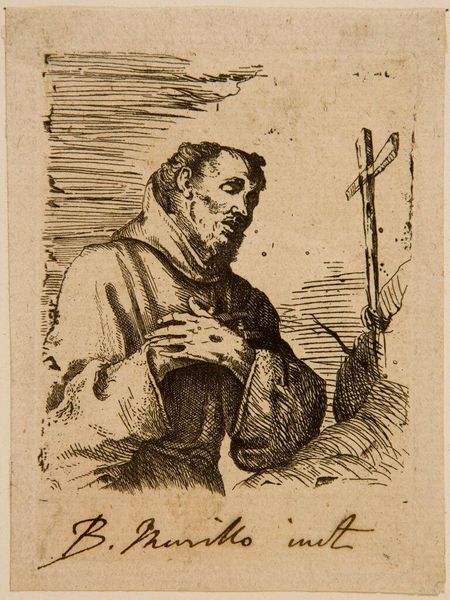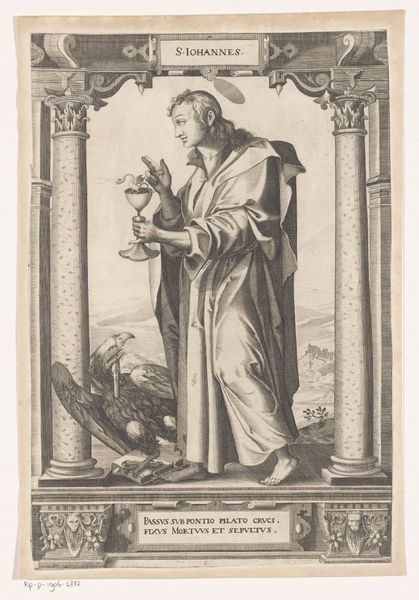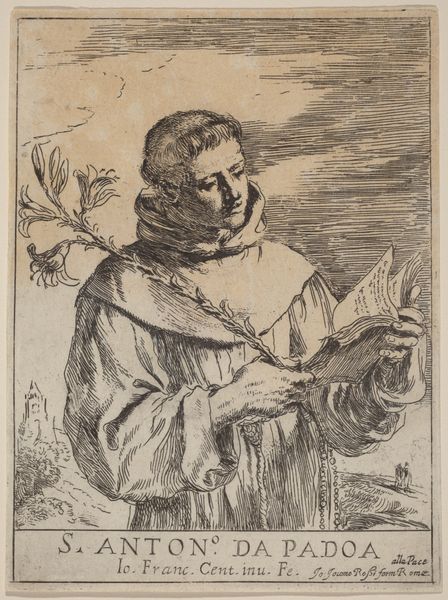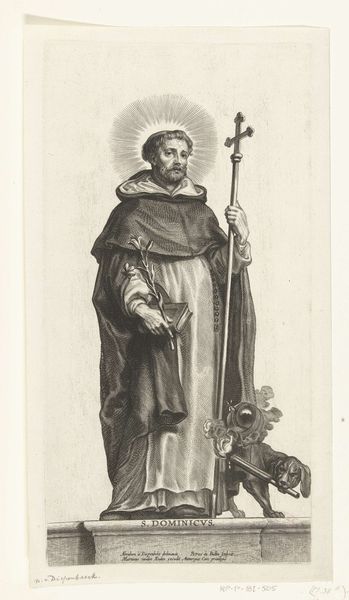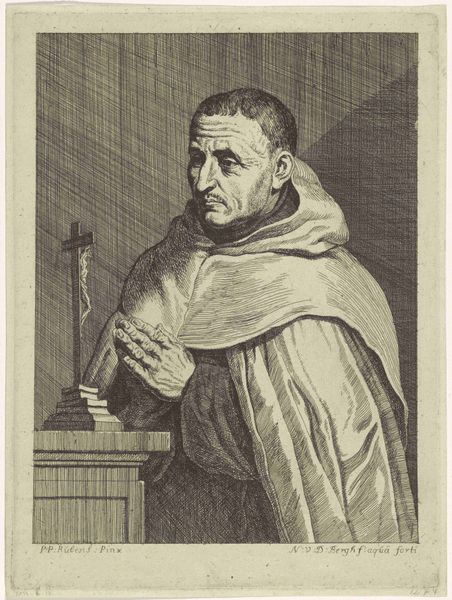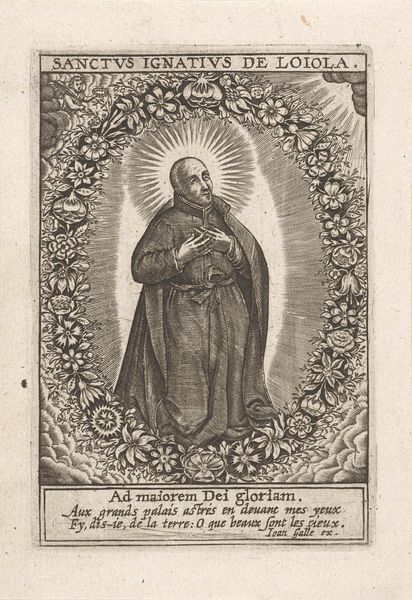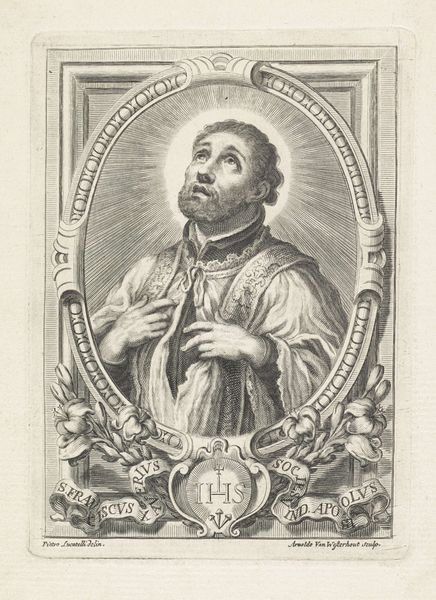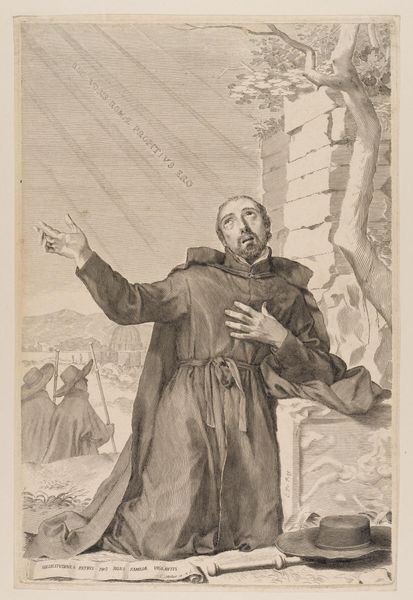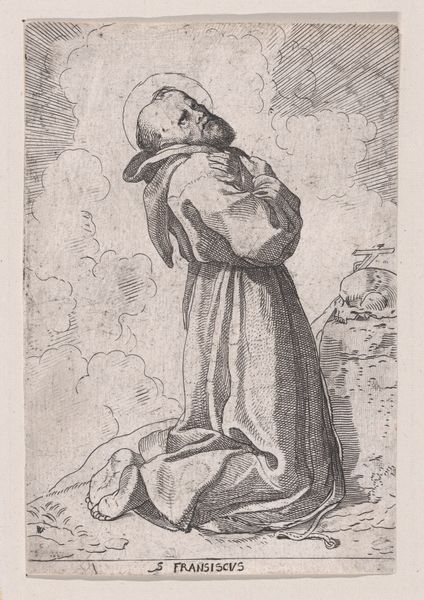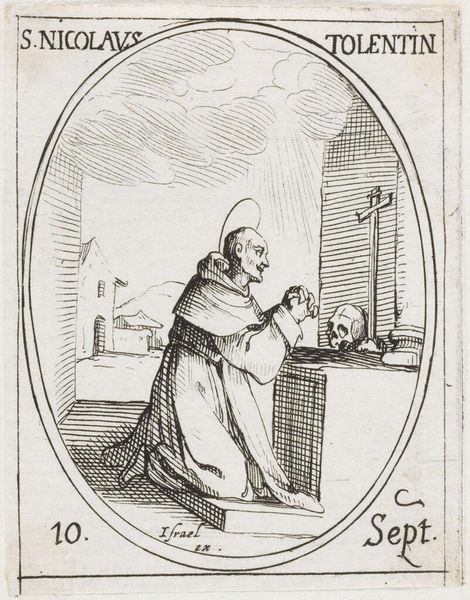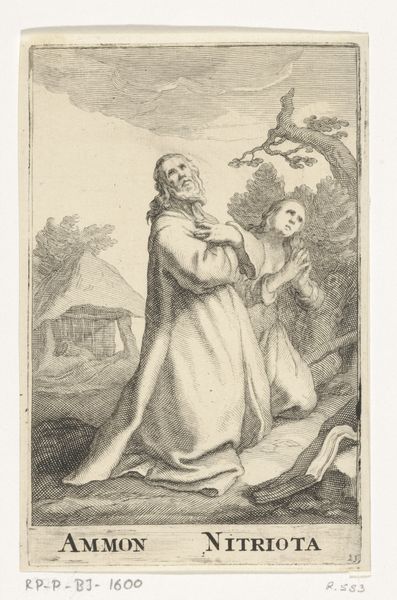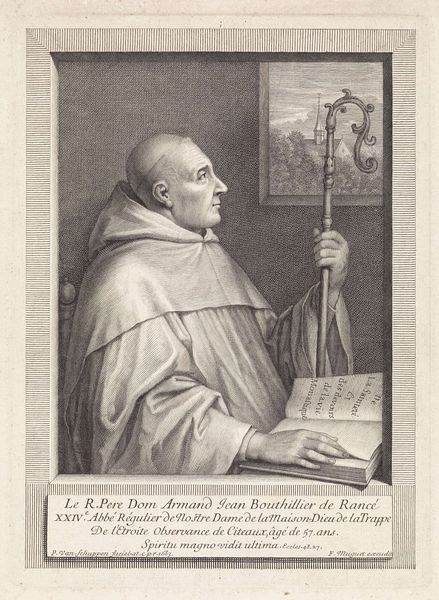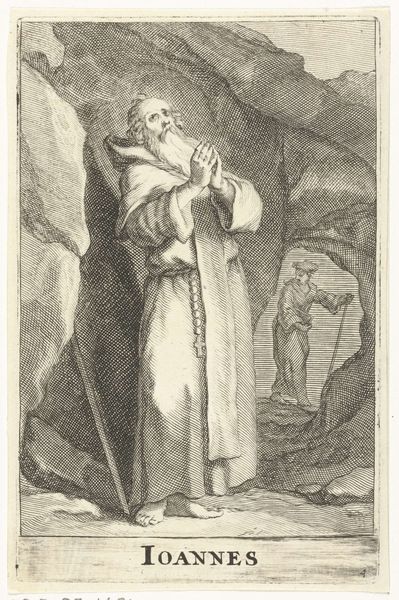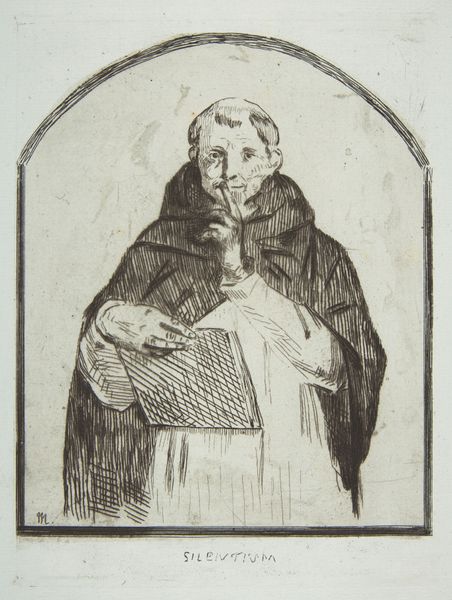
print, etching
#
portrait
#
baroque
# print
#
etching
#
figuration
#
history-painting
Dimensions: height 200 mm, width 160 mm
Copyright: Rijks Museum: Open Domain
Curator: Here we see Jan Lievens' etching from 1625-26, "Jakob zalft de steen waarop hij geslapen heeft," or "Jacob Anointing the Stone Upon Which He Slept." Editor: It feels stark, somehow. The starkness of the black lines on the white paper lends this work to have a sacredness to it. Like something essential has been laid bare. Curator: Well, etching, as a printmaking process, is really interesting in how it renders line. Acid is used to bite into the metal plate. It's an indirect process and there is always a tension between the artist's hand, the tool and the final product that I feel really connects with spiritual practices. Editor: I am intrigued with this, and this stone. A rock that becomes sacred. Is there a transformative process that art shares with that idea? Something ordinary becoming holy with artistic skill? Curator: It raises interesting questions about materiality and meaning. Labor too: how did the social context surrounding printmaking at the time this piece influence both its dissemination, as well as interpretation? Was Lievens attempting to reach a wider audience with biblical scenes than a painting in an elite collector’s home could reach? Editor: Definitely makes one consider accessibility, doesn't it? Etching as an endeavor that democratizes art. In what ways can this inform our views about contemporary mediums as well, like digital art. Is art more transformative when more hands can touch it? Curator: Or even minds perceive and interpret it, definitely. What materials and processes are considered to carry artistic merit, and who decides? Those questions can guide us back to Lievens’ original etching in a loop. It all circles back! Editor: A good way to circle, reflecting both on artistry and its reach. Thank you.
Comments
No comments
Be the first to comment and join the conversation on the ultimate creative platform.
